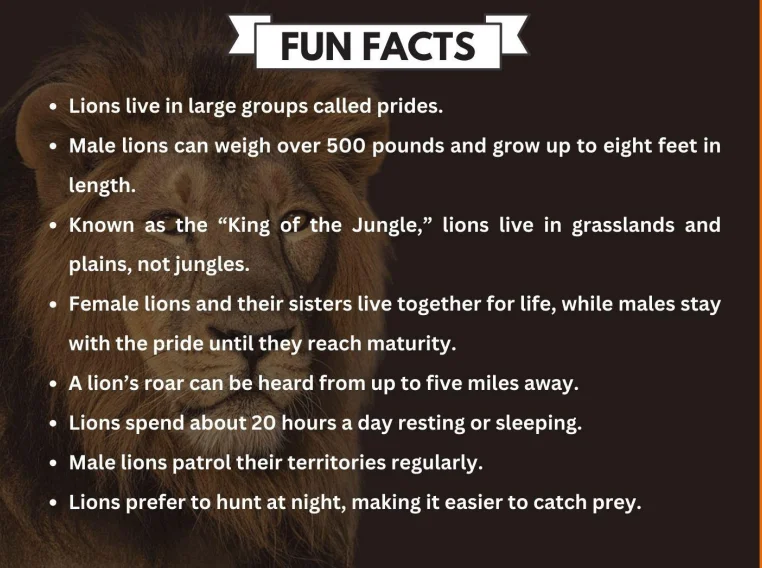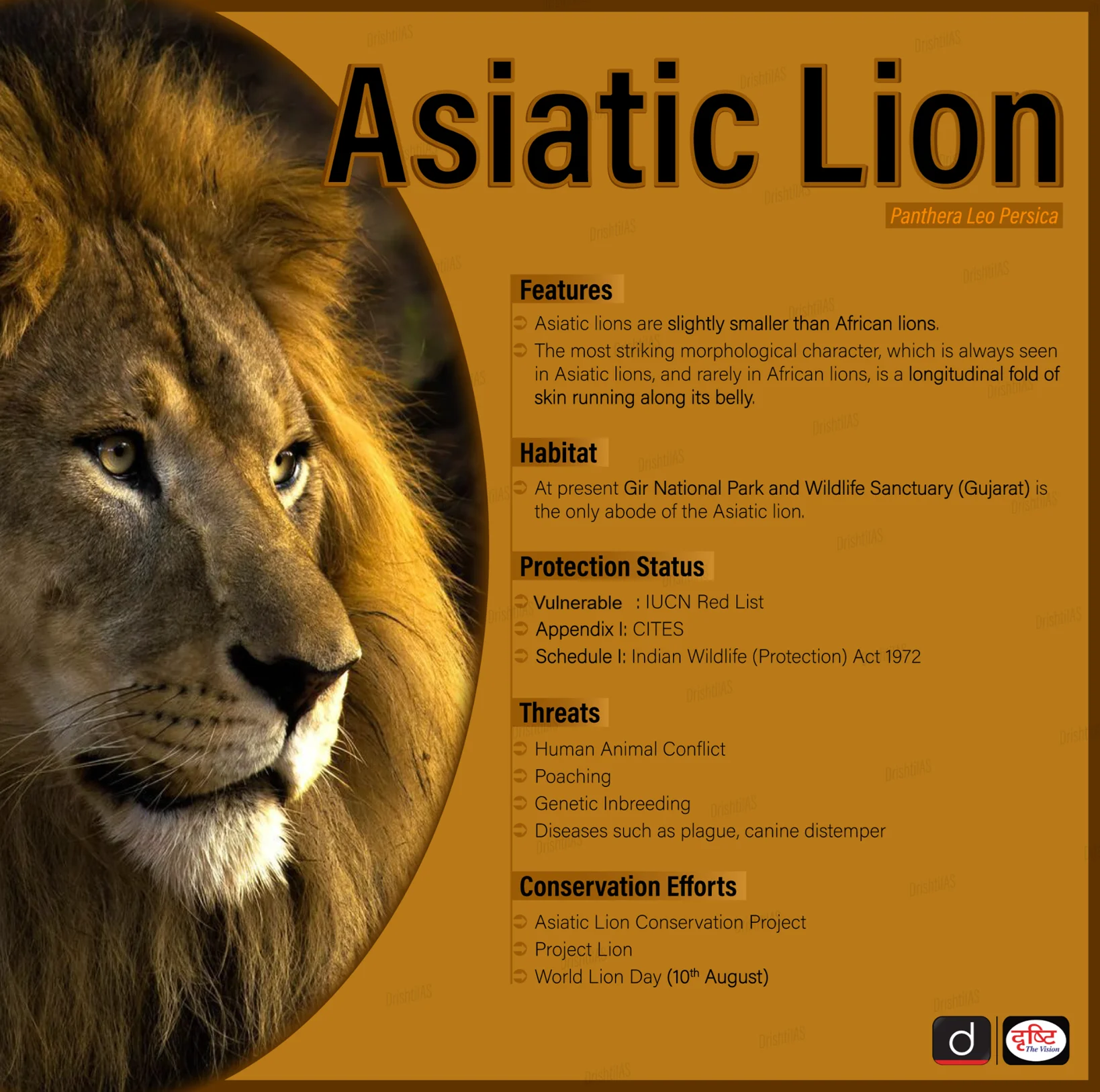Important Facts For Prelims
World Lion Day 2025
- 11 Aug 2025
- 5 min read
Why in News?
The Ministry of Environment, Forest and Climate Change celebrated World Lion Day 2025 at Barda Wildlife Sanctuary, Gujarat.
Note: World Lion Day (10th August) is an initiative started in 2013 by Big Cat Rescue (world’s largest accredited sanctuary dedicated to big cats) to raise awareness about the rapidly declining lion population and the urgent need for their conservation.
- Lions (Panthera leo) are the most social big cats, found mainly in sub-Saharan and west Africa, with a small Asiatic population in India’s Gir National Park.
What are the Key Facts About Asiatic Lions?
- About: The Asiatic lion (Panthera leo persica) is a slightly smaller than African lion.
- A unique feature of Asiatic lions is a longitudinal fold of skin along their belly, rarely seen in African lions.
- Unlike African males, Asiatic males have a less prominent mane, leaving their ears always visible.
- Habitat: Grasslands, savannas, dense scrub, and open woodlands.
- Ecological Role: Lions are apex predators that maintain ecosystem balance by controlling herbivore populations and preventing disease spread by targeting weak prey.
- Asiatic Lion in India: Asiatic lion numbers grew from 523 in 2015 to 891 by 2025, per the 16th Lion Census (2025).
- Asiatic lions are found in the Gir Forest, Barda Wildlife Sanctuary, and a few zoological parks in India.
- Barda has gained a reputation as the species’ second home after the stronghold of Gir.
- Cultural Significance in India: It is a symbol of strength and appears on India’s national emblem and currency.
- Conservation Status:
- Wildlife (Protection) Act 1972: Listed in Schedule I.
- Panthera leo (Lion) IUCN Red List: Vulnerable and IUCN Green Status (Largely Depleted).
- CITES: Appendix I.
- Asiatic Lion is part of the Species Recovery Program.
- Conservation Efforts:
- Project Lion: Launched on August 15, 2020 by the Ministry of Environment, Forest and Climate Change to secure the future of Asiatic lions.
- Spanning a 10-year period, the Project Lion is implemented by the Gujarat State Government, with support from stakeholders like the Central Zoo Authority.
- It is supported under the Centrally Sponsored Scheme- Development of Wildlife Habitat.
- It focuses on habitat improvement, population monitoring, and reducing human-wildlife conflict.
- International Big Cats Alliance (IBCA): Launched in April 2023 to foster global cooperation among 97 big cats range countries.
- Greater Gir Concept: Expands lion habitats beyond Gir National Park to include Girnar, Pania, and Mitiyala sanctuaries.
- It aims to increase protected areas to ensure sustainable populations.
- Advanced Technologies in Lion Conservation
- Global Positioning System and Geographical Information System: Monitors lions and vehicles for efficient surveillance.
- Geographical Information System (GIS)- Based Real-Time Monitoring facilitates real-time analysis and better management of conservation efforts.
- Automated Sensor Grid: Uses magnetic, movement, and infra-red heat sensors to track wildlife activity.
- Global Positioning System and Geographical Information System: Monitors lions and vehicles for efficient surveillance.
- Project Lion: Launched on August 15, 2020 by the Ministry of Environment, Forest and Climate Change to secure the future of Asiatic lions.
UPSC Civil Services Examination, Previous Year Questions (PYQs)
Prelims
Q. Consider the following statements: (2024)
- Lions do not have a particular breeding season.
- Unlike most other big cats, cheetahs do not roar.
- Unlike male lions, male leopards do not proclaim their territory by scent marking.
Which of the statements given above are correct?
(a) 1 and 2 only
(b) 2 and 3 only
(c) 1 and 3 only
(d) 1, 2 and 3
Ans: (a)
Q. Consider the following statements: (2019)
- Asiatic lion is naturally found in India only.
- Double-humped camel is naturally found in India only.
- One-horned rhinoceros is naturally found in India only.
Which of the statements given above is/are correct?
(a) 1 only
(b) 2 only
(c) 1 and 3 only
(d) 1, 2 and 3
Ans: (a)








